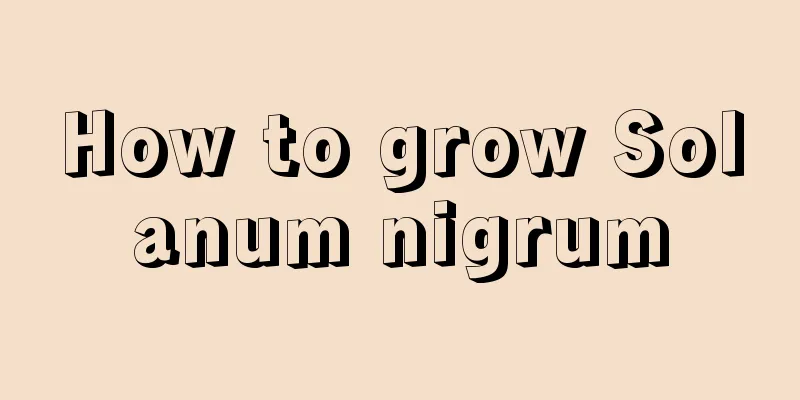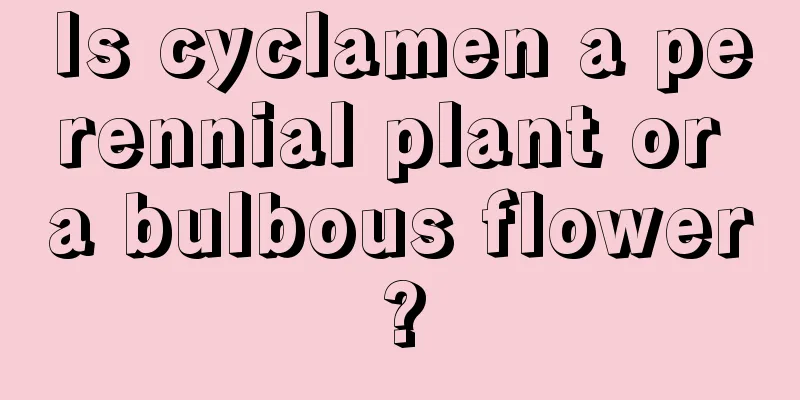Repotting flowers, but you don’t know these things? No wonder the yellow leaves are dying!

What should you pay attention to before repotting flowers?If you want the flowers to grow well, you need to change the pot to a larger one after the flowers have grown for a period of time. Just like people need to change into larger clothes when they grow up, the same principle applies to changing pots for flowers. What should you pay attention to when changing pots? 1. Stop watering 3-5 days in advanceWhen you decide to repot the flowers, stop watering 3-5 days in advance to allow the soil to become drier. It is easy for the roots to separate from the soil when repotting. 2. Keep one-third of the soil around the rootsAfter removing the flower roots from the pot, be careful to remove the soil around the roots. Keep the soil in the middle of the roots and do not remove all the old soil to prevent damage to the roots. 3. Do not damage the taproot when pruningAfter the roots are removed from the pot and soil, use scissors to cut off the old roots, empty roots, and rotten roots. Never cut the taproot. Pruning can promote the growth of new roots. 4. Do not change pots frequentlyGenerally speaking, you can repot the flowers when the temperature is above 20 degrees. The frequency of repotting should not be too often, usually once every 1-2 years. Of course, different flowers have different time to repot. If the flowers bloom in winter or early spring, wait until autumn to repot them. If you repot your Clivia like this, its leaves will be so green that they will burst through the pot with its roots!Clivia needs to be repotted once a year because the roots have been growing for a year and the nutrients in the old soil are almost used up. Replace the pot with a new one and use new soil to let the Clivia grow rapidly! 1. Remove the Clivia from the pot and soilWhen the temperature is not lower than 15 degrees, you can change the pot for the Clivia. After stopping watering the Clivia for 3-5 days, remove the Clivia from the soil. 2. Prune the rootsCut off all the old roots and empty roots of the Clivia, being careful not to damage the healthy root system. 3. Prepare new soil and put it in the pot.First, spread a layer of pine needle soil on the bottom of the pot, then a layer of melon seed shells, and finally a layer of nutrient soil. Dig a hole in the soil, put the roots of the Clivia into the soil, then bury it with soil, fix it, and water it thoroughly. 4. Place in a cool and ventilated place to slow down the growth of seedlingsPlace the repotted Clivia in a cool and ventilated place for a week to grow seeds. Keep the temperature at 15-25 degrees. Do not apply fertilizer for the time being. "Sandwich" method with new soilChanging the flower's pot to a bigger one means you need to change the soil. You should choose new soil that is nutrient-rich, loose and breathable, which will be more conducive to the flower's recovery and growth. "Sandwich" soil mixing means layered soil mixing. Each layer of soil is different and is prepared according to the different requirements of various flowers for soil. How to prepare soil for succulents?Flower lovers who have grown succulents know that succulents are prone to root rot, so loose and breathable soil is very important for succulents. First spread the expanded clay on the bottom of the pot, then spread the mixed soil such as peat soil, perlite, and cinders on the second layer, and finally spread the first layer of Akadama soil on the surface of the pot. How to prepare soil for ordinary flowers?Flowers that like moisture should choose loose and breathable soil to prevent root rot. You can first put the bark at the bottom of the pot, then put in the nutrient soil, and finally spread expanded clay on the surface of the pot. How to prepare soil for drought-tolerant cacti?Cacti require soil that is highly permeable and breathable. If you water them too much, the water will quickly drain out of the pot. You can first spread a layer of peanut shells on the bottom of the pot, then put in nutrient soil, and finally spread river sand on the surface of the pot. Is this the right soil for acid-loving flowers?For flowers that prefer acidity, such as camellia and azalea, flower lovers should be careful not to make the soil too alkaline, otherwise the leaves will turn yellow and wither. First, put pine needle soil on the bottom of the pot, then put peat soil and eggshell powder on the second layer, and finally put sand on the surface of the pot. Tips for repotting and soil preparation, Huahua will introduce here first. Welcome to share with other flower lovers! |
<<: How to grow the grass jade dew more plump
Recommend
Difference Between Hollyhock and Mallow
1. Differences in plant types Hollyhock can grow ...
When is the best time to transplant red maple?
Before transplanting red maple, you need to choos...
How often should you water a cactus?
In many people's minds, cactus is an easy-to-...
Water Clivia with these “2 kinds” of water once every 15 days to ensure strong roots and more flowers!
1. Soybean water Soybeans are rich in nutrients. ...
When is the best time to plant lettuce?
Lettuce is a very common rural vegetable . Many f...
How to grow money string to make it thicker
1. Breeding methods 1. Soil: Choose soil that is ...
How to plant bitter chrysanthemum? Planting time and method
Planting time of bitter melon Chrysanthemum can b...
Maintenance method of potted Ligustrum lucidum
1. Pot soil selection The plant of potted Ligustr...
Winter pruning methods for apricot trees
Short Shortening is the process of cutting back p...
When does crape myrtle bloom? Pictures of crape myrtle flowers
1. When does crape myrtle bloom? Crape myrtle usu...
How to grow grape seeds in small pots
1. Preparation before sowing Wash the grape seeds...
Cucumber planting technology and management fertilizer
The root system of cucumber is shallow and the ro...
Is it good to water flowers with snow water? (What are the benefits of watering flowers with melted snow)
Can melted snow be used to water flowers? Water i...
Rose cutting propagation method
time Roses are best propagated from cuttings in s...
How to fertilize Platycodon grandiflorum
Spring fertilization In fact, this plant does not...









